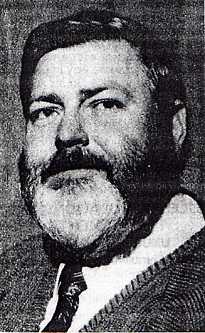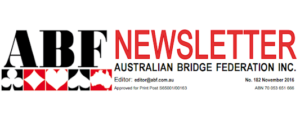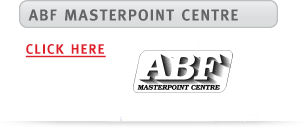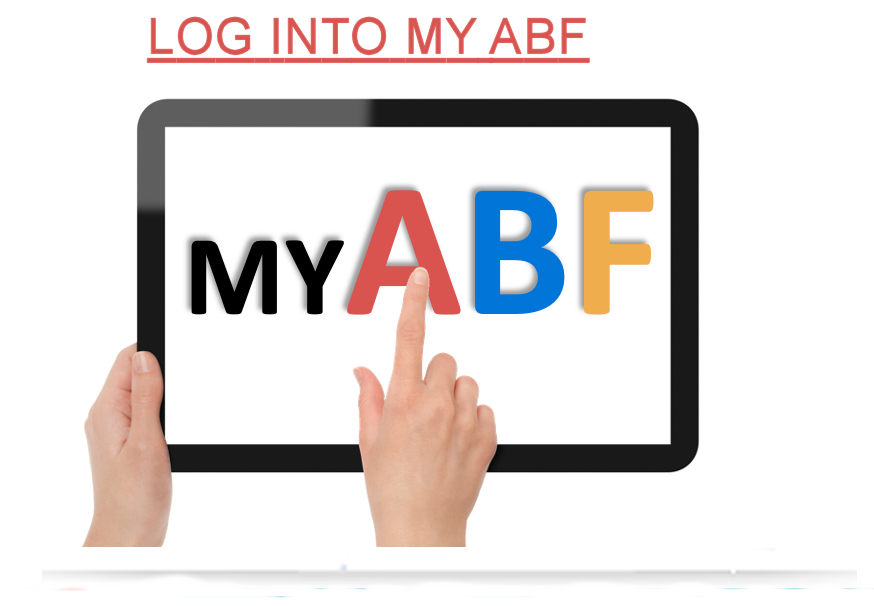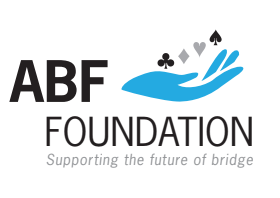At the time of his death, Keith McNeil was described as “one of the giants of Australian bridge” and nothing in the time that has passed since then has given cause to alter that judgment.
Keith was born in Adelaide on 19 April 1929. His father was an excellent poker player (although a very bad bridge player) and his father’s poker winnings were reputed to have funded Keith’s pharmacy studies at Adelaide University.
Keith first started playing auction bridge at age 12 and joined the South Australian Bridge Association (SABA) in 1949. He was taken under the wing of George Stock (then in his sixties) who practised relentlessly with him. George’s team won everything at SABA with Keith the fifth member, representing South Australia at the 1955 Hobart ANC.
After Hobart he began a twenty-year bridge partnership with Paul Bruckner who was written up often in Keith’s bridge journalism. A famous situation arose when Keith, playing rubber bridge for real money, pulled Bruckner’s double of five hearts to five spades and in response received the line “Spades, you like spades. I like spades too. 7S!” When this was doubled Bruckner redoubled, giving rise to the term “retribution raise and redouble”.
In 1963 Keith won three South Australian state championships and captained the South Australian team that reached the final of the ANC held in Adelaide – losing to a typically very strong NSW team after being in the lead at the half-way point.
In the following year, 1964, competing family and business demands on his time led to his retirement from competitive bridge. He still featured in some short national events. In 1975 won the inaugural mixed pairs with Linda Alexander. He won the Life Masters Pairs with Neville Moses in 1985 and the Grand and Life Masters Pairs in 1987 with Suzie Klinger. In 1988, his declarer play was the subject of an article by Alan Truscott in theNew York Times. In 1976 he was non-playing captain of the Australian women’s team that finished fourth in the Far East Championships.
It is not though primarily as a player that he is remembered. Following his retirement from competitive bridge he concentrated on administration, writing and commentating. He occupied every position in SABA (except, as he noted, that of Women’s President/Committee). He was Secretary from 1970 to 1972 and President in 1973. While Secretary, he was instrumental in buying the current SABA clubrooms (using his own money to take out an option). He was made a life member of SABA in 1976. When the building was extended in 1993, it contained a Keith McNeil Lounge in recognition of his great contribution.
Keith began his involvement with the ABF in the early seventies. At this time ABF meetings were held at the Australia-day congress and ANC; and states tended to appoint delegates from those who were present. Keith attended some ABF meetings in 1973, 1974 & 1975 and was the official South Australian delegate from 1976 to 1992.
During the 1980s Keith put in a lot of effort into promotional activities and was instrumental in raising the profile of the ABF in corporate circles and getting new sponsorship for bridge. The position of “Recorder” was introduced for the 1986 NOT and Keith appointed. At the time of his death, the then President of the ABF, John Brockwell, noted that “this job was made for Keith because of his approachability, his comprehensive knowledge of the game, his sense of justice and especially the respect in which he was held by his fellows”.
He was elected to the Presidency of the ABF mid-term in early 1987 following Denis Howard’s resignation (to take up the Presidency of the WBF) – a position he held until 1990. His health was already poor by this time and he described his election as a “sympathy vote”. However, as Australian Bridge commented at the time, positions at this level were not given on the basis of sympathy and his illness did not prevent his pursuing an ambitious agenda.
He was a strong supporter of the directions set by Denis Howard but saw scope to improve communication between the ABF and grass roots membership; to improve relations with players representing Australia; to provide more bridge activities for ordinary club members; and provide more national events.
His first term in office saw substantial improvements in the masterpoint system, which had been a running sore for the bridge community. A Youth Coordinator was appointed and teaching initiatives implemented. As Keith had foreshadowed, special efforts were made to improve communication with clubs and players. These efforts included distribution of free copies of the new laws, a free subscription to “Australian Bridge” to each club and earlier notification of key events.
In an article written in February 1990 just before the end of his final term office he reflected that while history would record its own verdict on his time in office he took satisfaction in the fact that the ABF had “moved firmly down the road of to being a fully-funded, self-sufficient professional body”. The Masterpoint Centre was a fulltime, fully paid unit and an Executive Officer in Canberra had been appointed. He felt the ABF was “well on the way to service bridge and its members in a similar fashion to the American Contract Bridge League and the English Bridge Union”. He finished with an ongoing commitment to deal with bad behaviour at ABF tournaments – “we should never forget that playing bridge is, and always should be, fun, no matter how hard one may be striving to win”.
A high point of the Presidency was the very successful staging of the Bermuda Bowl and Venice Cup in Perth in 1989. Keith, John Scudder and Joe Greenfield were the organising team. With the support of many volunteer helpers, the standard of organisation and technical excellence was regarded as a model for future events. He was forced to give up the Presidency in early 1990 because of ill health. As a token of the great esteem in which he was held, the ABF constitution was amended to create the position of President Emeritus to which he was elected.
Keith was as prominent in bridge writing as he was in administration. He contributed a weekly bridge column to the Adelaide Sunday Mail for twenty-five years from 1968. He also contributed occasional articles to bridge magazines. By far his biggest contribution to bridge literature though was his role as the moderator of the Bidding Forum inAustralian Bridge .
He was a member of the first Australian Bridge Bidding Forum panel in 1970 but was at first horrified when asked to take over as Director – on the basis that it was unheard of for somebody without an international reputation as a player to fill such a position. He, therefore, took on the role “temporarily” in 1973. At first, his contribution was interspersed with guest directors but the guest directors soon disappeared and he stayed in charge for twenty years. His last Bidding Forum was published a month after his death in August 1993.
Under his direction, the bidding forum became one of the most international of its kind. The Forum is now remembered mainly for Keith’s “boots and all” style. In the 6th edition of the Encyclopaedia of Bridge , he is remembered as “the sadistic moderator” of the Forum. Paul Lavings characterised him as the type of director who “gets boots and all into the action, tells panellists they are idiots, parades private beliefs and opinions and wades knee-deep in blood and gore”. Despite this, or perhaps because of it, there was never any lack of top international players wanting to participate.
This style though was sustainable only because it was based on penetrating analysis and there were some serious underlying messages – particularly the importance of trusting and protecting partner – and a strong commitment to making the issues understandable to the average player.
Keith was not afraid of adopting positions that could be seen as reactionary. He hated negative doubles over overcalls and despised weak two openings. He was not though an opponent of all things new. He developed his own variant of Acol – ROMACOL and he also promoted in Australian Bridge the concept of the “tartan two” – the forerunners of the modern multis and myxos.
In 1991, Keith compiled the best of Bidding Forum into a book Match Your Bidding Against the Masters. This was not his first book. In 1964 he had published Winning Auction and Short Resume of the Roman Club System of Distributional Bidding and in 1971 The New South Wales System – A Précis of the Book (With a few improvements).Bidding Against the Masters though was by far the most substantial and brought international recognition and sales. No less a person than Terence Reese co-authored with him to produce a British edition in 1993.
Keith began doing vugraph commentaries in the 1960s and remained much in demand at national and international events right to the end. His delight as a kibitzer at seeing “blood on the floor” was contagious. He maintained his style and wit covered his lack of knowledge but he was in fact a quick and astute analyst of the possibilities of a hand.
Keith began seriously collecting bridge books in the seventies and in l993 donated his collection to the ABF. The collection to which new material is constantly being added is contained in the Keith McNeil Library in the ABF headquarters. It is one of the top ten bridge English-language libraries in the world. Among the many rare books and sets of journals, the main “jewels” of the bequest are the complete sets of Bridge World and The Bridge Magazine. It has complete sets of Australian Bridge and New Zealand Bridge and most of the major works on bridge and many of the minor.
The bequest of the library was not a last minute thought. In 1982 he visited the headquarters of the American Contract Bridge League in Memphis which houses one of the great bridge libraries of the world, started by Albert Morehead’s donation of his personal library. He found out how it worked and how it had grown – and the bequest was accompanied by an agreed strategy for both preserving and building on the collection for future generations.
Keith received many honours for his services. He was made a life member of SABA in 1976 and the ABF in 1984. In 1988 he received the Medal of the Order of Australia for his services to bridge and pharmacy (a pharmacist by profession, he was the Pharmacy Guild’s Public Relations Officer for many years).
Sources:
| Phillip Alder | “Keith McNeil: A Tribute” Australian Bridge(December 1983) |
| David Askew | “SA Man Honoured” The Advertiser (reprinted inAustralian Bridge 1984) |
| Tim Bourke | “Some memories of Keith McNeil” Australian Bridge(October 1993) |
| Tim Bourke | Personal communication (June 2007) |
| Linda Alexander | “A Tribute to Keith Albert McNeil OAM JP 1929-1993”SABA News (August 1993) |
| John Brockwell | “A Brief Tribute to Keith McNeil” Australian Bridge(August 1993) |
| Paul Lavings | “Keith McNeil – a profile” Australian Bridge (June 1987) |
| Stephen Lester & Richard Brightling | “Editorial” Australian Bridge (August 1993) |
| Keith McNeil | “In Memoriam – Keith McNeil 1929-1993” Australian Bridge (August 1993) |
| Keith McNeil | “The Dreaded Tartan Two-Bids” Australian Bridge(December 1971) |
| Keith McNeil | “A Word from the President” Australian Bridge Federation Newsletter (December 1977) |
| Keith McNeil | “ABF President” |
| Keith McNeil | “Speech at Library Opening” Australian Bridge Federation Newsletter (1993) |
| Keith McNeil | “Guest Editorial” Australian Bridge (February 1990) |
| Eric Ramshaw | Personal communication (March 2007) |
| Alan Truscott | “An Australian Tournament to Be a Bicentennial Event” New York Times (28 January 1988) p C16 |
| ___________ | “More congratulations to McNeil” Australian Bridge(June 1988) |
| ___________ | “Editorial” Australian Bridge (October 1987) |

